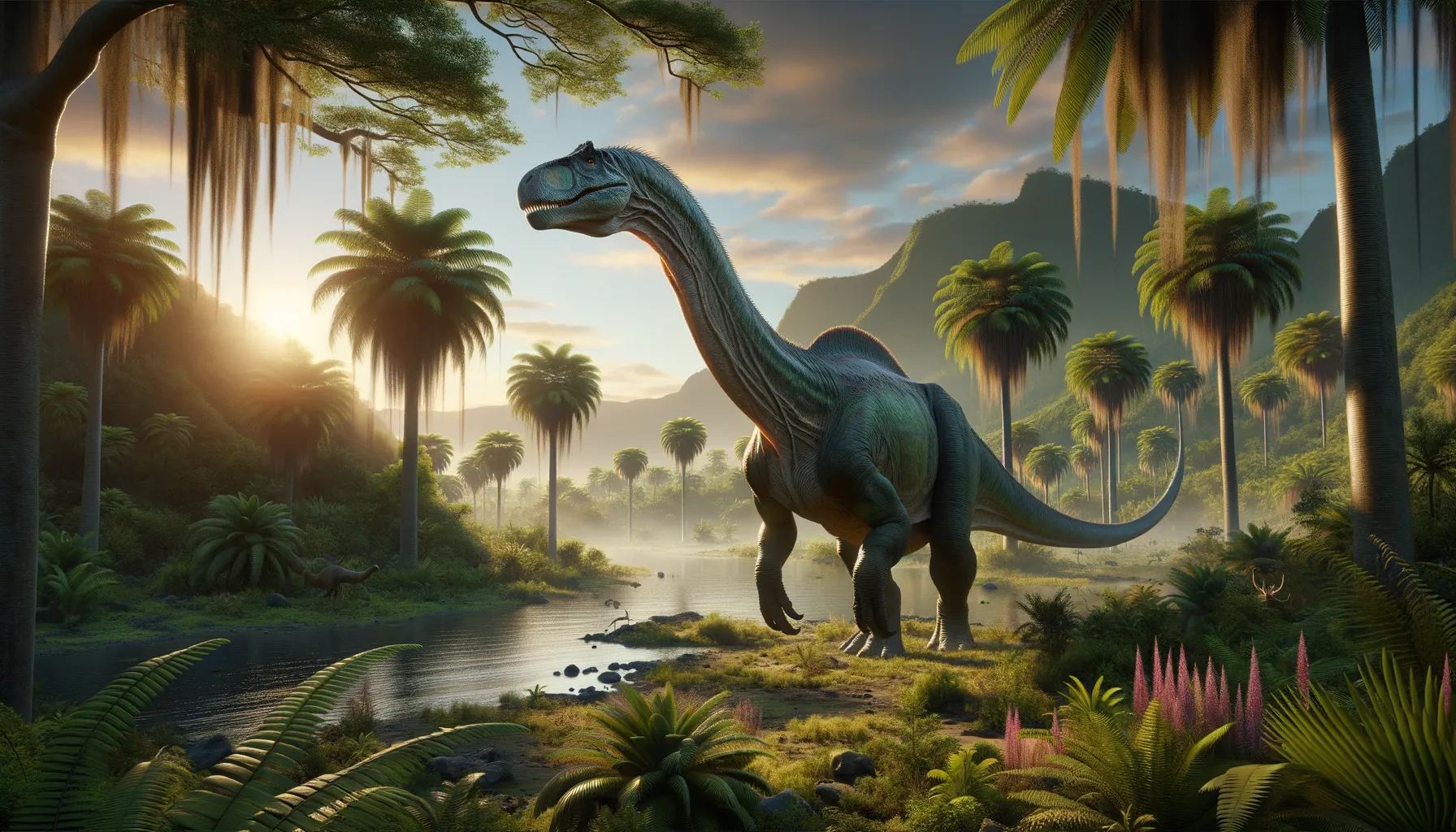
Rapetosaurus
The gentle giant of the Cretaceous era.
Period
Cretaceous
Length
Around 50 feet from head to tail.
Height
About 33 feet tall at the head.
Weight
Approximately 10 metric tons.
Rapetosaurus is a massive sauropod dinosaur that lived during the Late Cretaceous period. Known for its long neck and tail, this herbivorous giant roamed what is now Madagascar. Its fossils have provided insight into the diversity and evolution of sauropods. It was a dominant presence in its ecosystem, using its size to deter predators while browsing for vegetation.
Diet
Rapetosaurus was herbivorous, feeding primarily on a diet of ferns, conifers, and flowering plants. Its long neck allowed it to reach high vegetation, making it an adept browser of tall trees.
Hunting
As a herbivore, Rapetosaurus did not engage in hunting. Instead, it focused on gathering and consuming plant material for sustenance.
Environmental challenges
Rapetosaurus lived in a period of significant environmental changes, with fluctuating climates that affected available vegetation. Droughts and seasonal variations could have posed challenges in finding adequate food. Additionally, its large size required substantial quantities of vegetation to sustain itself.
Speed
Moderate pace typical of large sauropods.
Lifespan
Expected to live several decades.
First discovery
Unearthed in Madagascar in the late 1990s.
Fun Facts
- Rapetosaurus was a massive dinosaur that lived about 70 million years ago during the Late Cretaceous period.
- This giant was a member of the titanosaur group, known for their long necks and enormous size.
- Despite its massive body, Rapetosaurus had relatively small and delicate-looking skull.
- The fossil discovery of young Rapetosaurus suggests they didn't rely heavily on parents and were pretty independent early on.
- Rapetosaurus lived in what is now Madagascar, an island off the southeastern coast of Africa.
- It had a long neck which helped it reach high into trees to eat leaves and other vegetation.
- Its name, Rapetosaurus, is inspired by a mythological giant from Malagasy folklore, reflecting its gigantic size.
Growth and Development
Rapetosaurus, like other sauropods, likely experienced rapid growth in its early years to reach its massive size. This fast growth may have provided a survival advantage against predators. Its development would have involved long periods of juvenile growth before reaching maturity.
Habitat
Rapetosaurus inhabited floodplains and forested areas, where trees and other vegetation were abundant. Madagascar's environment during the Cretaceous provided ideal conditions for such megaherbivores. The region's diverse ecosystems supported various plant species for a suitable diet.
Interaction with other species
Rapetosaurus coexisted with other dinosaurs, reptiles, and mammals. Its massive size made it less prone to predation, allowing for peaceful interactions with smaller species. Competition for food with other herbivorous dinosaurs might have occurred.
Natural lifespan
Rapetosaurus thrived through several decades, possibly exceeding 50 years.
Reproduction
Likely, Rapetosaurus reproduced by laying eggs in nests as seen in other sauropods. Group nesting may have been a strategy to ensure the survival of the young. Hatchlings would have been vulnerable, relying on rapid growth for survival.
Social behaviour
Rapetosaurus may have lived in herds or family groups, a behavior seen in many large herbivores, to provide protection against predators. Such group living could also have facilitated finding and accessing food resources.
Fossil locations
Fossils of Rapetosaurus have predominantly been found in Madagascar, providing crucial insights into the diversity of Gondwanan dinosaur fauna. These discoveries have helped paleontologists understand the distribution and evolution of sauropods in isolated environments.
